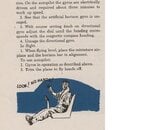Navalwarrior
Staff Sergeant
- 764
- Jun 17, 2018
Resp:The P-47 was not that much more rugged than the P-51.
A hell of a lot of them were shot down.
The only issue with ruggedness with the Mustang was getting hit in the radiator.
Then again had about 15 minutes to get out.
If the Thunderbolt got hit in the oil cooler or reservoir it would be in flames.
You had to get out.
From everything I've read, the P-47 was a lot more rugged than the P-51. The US 8th AF lost a lot of P-47s in air-to-air engagements in the beginning for several reasons; outdated training, lack of experience . . . due to coming into the war late. Tactics took time to develope. There are many stories of P-47 pilots returning to base with aircraft so badly damaged . . . the aircraft were written off. The P-51 gave a pilot, especially an experienced pilot, significantly better manuverabilty against the Luftwaffe. Range brought them into areas the P-47 couldn't tread until the Allies bases advanced across Europe.


